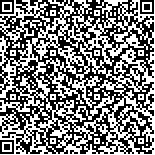下载中心
优秀审稿专家
优秀论文
相关链接
摘要

本文在总结和比较中国现有黄海、东海海域漫衰减系数反演算法的基础上,利用水色测量数据分析得到漫衰减系数Kd(532)与Kd(490)之间的关系,为激光测深系统(以CZMIL为例)的性能评估提供了基础.利用MODIS二级数据产品评估了中国黄海、东海海域在CZMIL海道测量模式下最大可测水深的空间分布.研究结果表明CZMIL在黄海、东海海域可测水深基本在0—50 m,该区域的面积占研究区域面积的比例为76.2%,为浅海海域开展激光测深作业提供了测深能力评估的依据和方法.
A large percentage of the worlds population and commercial centers are in the vicinity of coastal environments. Understanding near shore habitats is critical for management decisions, disaster planning, reduction of environmental impacts, and resolution of challenges resulting from growing populations and rising sea levels. The goal of this study is to predict the maximum detectable bottom depth for CZMIL in the Yellow Sea, the East China Sea region. The coastal waters of China, being considerably polluted, represent typical coastal Case Ⅱ waters with high sediment load and complicated optical properties. Therefore, using satellite algorithms like the ratio of water-leaving radiances at different wavelength to estimate water optical properties may be practically impossible and even provide incorrect results. Hence, an approach for the calculation of diffuse attenuation coefficients at 490 nm exclusively for the coastal waters of China is chosen. The map of the CZMIL maximum depth in the Yellow Sea is then shown.The methods used in the study are summarized as follows. First, samples of the Case II water color test collected from the Yellow Sea in the spring of 2003 are used to verify the diffuse attenuation coefficient at 490 nm; the algorithm which is proposed by Wang. et al., is employed in the verification. Owing to the laser of CZMIL working at a wavelength of 532 nm, the diffuse attenuation coefficient at 490 nm should be recalculated to obtain the diffuse attenuation coefficient at 532 nm. Data processing demonstrates good correlation regression between the diffuse attenuation coefficient at 490 nm and the diffuse attenuation coefficients at other wavelengths (412, 443, 510, 520, 555, and 565 nm). Thus, the regression between the diffuse attenuation coefficient at 532 nm and the diffuse attenuation coefficient at 490 nm are obtained.In the next step, the CZMIL maximum penetration depth for the coastal waters of China is estimated as the diffuse attenuation coefficient at 532 nm divided by 3.75, which is a specification of CZMIL provided by Optech Incorporation. The equation is valid for bottom reflectivity above 15%. Then, the CZMIL maximum penetration depth of the entire Yellow Sea and East China Sea region is estimated using the remote measurement data of the NASA space satellite Aqua-MODIS (hereafter referred to as NASA data) for the said region. The diffuse attenuation coefficient at 490 nm for the NASA data is first calculated using remote sensing reflectance at 490, 555, and 670 nm. The diffuse attenuation coefficient at 490 nm is then converted to the diffuse attenuation coefficient at 532 nm. Lastly, the maximum penetration depth is calculated as the diffuse attenuation coefficient at 532 nm divided by 3.75.Two maps show the CZMIL maximum depth and the depth penetration isobaths for the region of interest. The range of CZMIL maximum depth was divided equally into 36 bins, and the detectable area inside each bin was calculated and presented in a pie chart. With the two maps and pie chart as basis, we arrive at the following preliminary conclusions. (1) The maximum detectable depth along the Jiangsu coast may vary from 0 m to 10 m. (2) The CZMIL maximum detectable depth for the waters near the Yangtze River Delta does not exceed 12 m and extends as far as 200 km from the coastline. (3) Within 200 km of the coastline from the continental shelf, the CZMIL maximum detectable depth in the Yellow Sea ranges from 0 m to 50 m, and the area accounts for the 76.2% of the region of interest.

